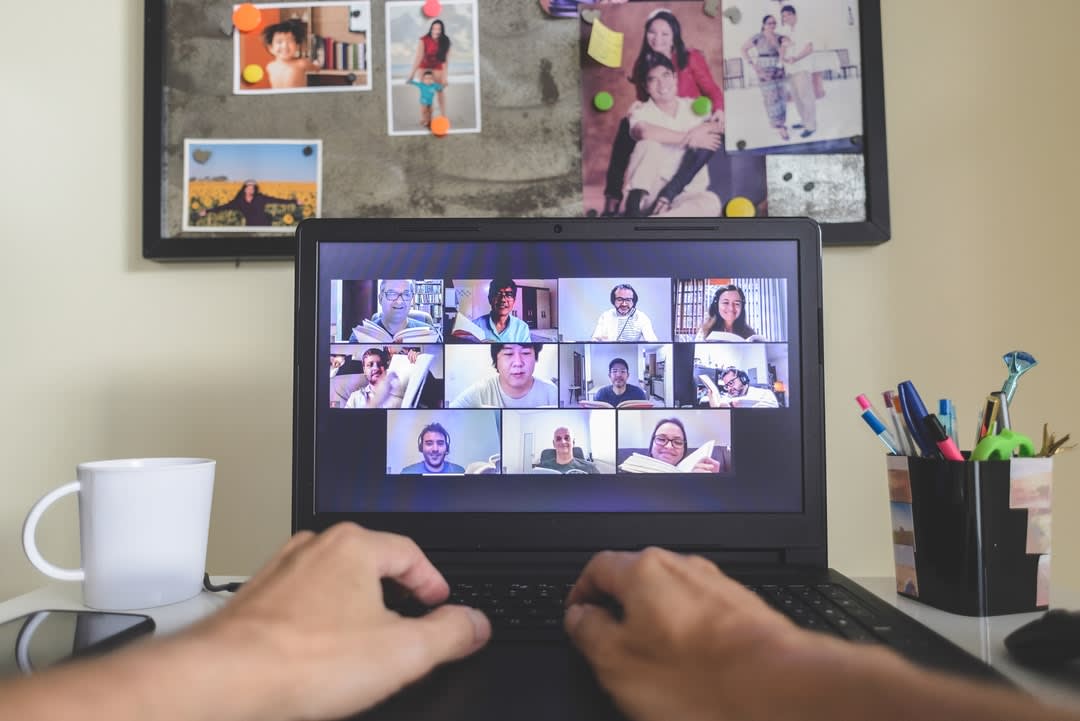Connecting with communities

When the COVID-19 pandemic instigated lockdowns around the world, many of us quickly became familiar with digital methods of maintaining and sustaining our professional work, social connections, keeping informed of COVID-19 developments, safety precautions, and restrictions.
At the Monash Migration and Inclusion Centre, we now rely solely on digital technologies and platforms to communicate and engage with each other, our stakeholder networks, and the wider public.
At the outset of the COVID-19 crisis in Melbourne, we knew that our key industry contacts who work at the frontline of engagement with culturally and linguistically diverse (CALD) communities would be facing significant communication challenges. We discovered that many organisations were experiencing digital challenges associated with managing and maintaining contact with their CALD groups of interest.
A research brief we published on “The role of technology to facilitate and support intercultural engagement” highlighted that although these challenges are acutely felt as a result of the COVID-19 pandemic, there was a significant gap in knowledge as to how organisations could use digital strategies to enhance intercultural, interactive online engagement in their everyday practice.

Addressing this gap, we interviewed a number of our Victorian and national stakeholders that work directly with CALD communities. Our participants included non-government organisations, educational institutions, community stakeholders and leaders, advocacy groups, multicultural organisations, local government representatives, and peak bodies.
Through the interviews, we sought to understand how these organisations were using digital technologies to engage with their end users during COVID-19, how these approaches differed from their previous engagements, and what innovations might transform their intercultural connections in the future.
The findings from our research demonstrated a strong transition to using digital technology to enhance community engagement, and a number of examples showed good practices that were shared with the research team. Yet, digital exclusion remained a critical problem for some groups.
From the accounts of our participants, CALD community members in Australia fell along multiple points of the digital inclusion trajectory.
Many people experienced barriers to online engagement due to difficulties associated with accessibility (internet access, cost, and connection), poor digital literacy, or a lack of individual access to resources such as computers, laptops, smartphones, and tablets.
To address this, a number of our participants have combined their digital engagement practices with the use of more conventional platforms, including radio and newspapers, to distribute information to, and maintain contact with, those digitally-excluded community members during the pandemic.

Despite the immediate transition to online engagement, the majority of digital engagement practices focused on one-way models of providing information – often through websites and social media platforms including Facebook, WhatsApp, WeChat, and Instagram.
Two-way, participatory engagement with community groups was limited, but there was evidence of innovative attempts to bring together people from different backgrounds. For example, one participant told us that their organisation’s weekly playgroup had transitioned to Zoom. The playgroup coordinator had set up their guitar, books and toys, and CALD families would dial in regularly for the session.
Communication benefits
While the rapid transition to online engagement was a steep learning curve for most organisations, a number of benefits surfaced relating to information communication, reach, and professional development. Digital platforms have allowed for rapid and up-to-date information communication, including in a range of languages to increase accessibility.
Participants also reported they’re attracting wider audiences to their activities and online events, noting the cost-effective reach that online engagement provides. During periods when travel was restricted, digital engagement allowed for greater connection and interaction with regional, remote, interstate, and even international communities. As one of our participants stated:
“I think, what we’ve realised is that the digital space has potential for us to be able to connect with all our other members who may have moved interstate, and also overseas.”
Another benefit of the rapid shift to online engagement was the opportunity for staff and community end users to professionally and personally develop their digital communication and engagement skills. Yet, all noted that there’s currently limited time to train, educate, and develop frameworks and strategies to support digital engagement.
Doing digital engagement well, and maximising and, indeed, extending community reach is the next frontier for many participants. Among the people we interviewed, there was a strong desire for the sustainable development and integration of digital engagement strategies into core business.
Identifying the next steps
Our report identified several next steps for organisations that work with diverse communities in Australia. There’s a need for formal training and capacity-building among employees and end users alike.
Though the COVID-19 crisis doesn’t make evaluation easy, as we progress in the months ahead, research and evaluations are also critically needed to better understand:
- what messages and information are disseminated by organisations
- how messages are received by the end user
- how these messages are interpreted and acted on.
We also believe strategies and frameworks that advance digital engagement must sit alongside traditional engagement methods in order to maintain and develop connections with digitally-excluded CALD community members.
As the second phase of lockdown continues in Victoria, and as we envisage the future of work and community life in Australia, what we learnt from our recent study is that there’s a significant need for sustainable digital engagement strategies in the post-pandemic world.
Our research, and indeed our lived experiences, have revealed the benefits of digital engagement. The challenge for organisations, especially those that connect CALD communities, is finding ways to advance a hybrid future that fuses active digital and face-to-face engagement.
Deeper, two-way engagement strategies that can be employed across digital platforms and groups are needed to ensure digitally-inclusive and sustainable practices exist beyond the COVID-19 crisis.
This article was written by Rebecca Powell, Research and Centre Manager of the Monash Migration and Inclusion Centre and Managing Director of the Border Crossing Observatory; Charishma Ratnam a Research Fellow in Criminology at the MMIC; Rebecca Wickes, Associate Professor of Criminology and MMIC Director and Chloe Keel, a Research Assistant at the MMIC. It was published by Lens.
Rebecca Powell is the Research and Centre Manager of the Monash Migration and Inclusion Centre and the Managing Director of the Border Crossing Observatory.













